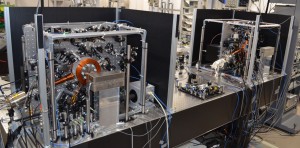Rewinding the future of timekeeping Beyond time with the optical lattice clock

To measure time accurately, humankind has sought to identify constant periodic phenomena in the natural world.
Periodic phenomena such as the rotation or revolution of the earth were used in the past as “rulers” to measure time. These rulers, however, have each had their shortcomings: for example, the rotation of the earth is gradually slowed by tidal friction, and is therefore not constant. The accuracy of our timekeeping ruler was vastly improved in 1955 with the discovery of the cesium atomic clock. Thanks to a succession of major advances, the cesium atomic clock, which measures time via the microwave frequency absorbed by cesium atoms cooled to a temperature near absolute zero, is accurate to just 1 second in 30 million years.
Now, Professor Hidetoshi Katori of the Department of Applied Physics, in the University of Tokyo’s Graduate School of Engineering, is developing a clock that offers even greater accuracy: the optical lattice clock that is accurate to within just 1 second in 30 billion years—more than twice the age of the universe (figure 1).
Why do we want to measure time so accurately?
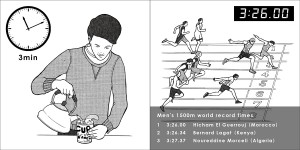
Figure 2. Time scales and their applications.
The accuracy of the measurement of time is typically aligned to the application. A one-minute scale is sufficient for preparing three-minute cup noodles: from adding the boiling water to the time the noodles are ready (left). However, separating the times taken to run 1500 meters by the world’s leading track athletes requires a much finer scale of 10 milliseconds (right).
© 2015 The University of Tokyo.
In our everyday lives, we will never have to worry about an error of 1 second in 30 million years. Why then is Katori seeking to improve this accuracy by three orders of magnitude: that is, to create a clock that can measure time to an accuracy of 10-18 seconds?
To understand his quest, we need to think about the consequences of Einstein’s special theory of relativity and general theory of relativity. The special theory predicts that time passes more slowly for moving objects, and the general theory predicts that time passes more slowly where gravity is stronger, for example closer to a heavy object. This slowing of time is infinitesimally small at the walking pace of a human or at the variation in gravitational potential energy produced by a height difference of 1 centimeter, and cannot be measured using today’s atomic clocks. However, a clock that can measure time to 18-digit accuracy would enable such slowing of time in everyday life to be detected.
Principle of the optical lattice clock
The leading candidate for the next-generation device to replace the cesium atomic clock was thought to be the ion trap method, in which time is measured via one million accurate observations of the frequency of vibration of a single charged particle cooled to nearly absolute zero, suspended between electrodes. However, it takes ten days to make a measurement to 18-digit accuracy using this method.
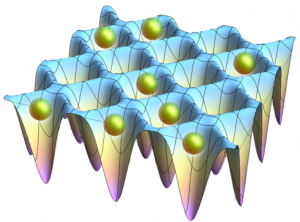
Figure 3: Schematic representation of an optical lattice.
Interference of laser beams creates an “egg box” optical lattice in which each “cup” holds a single atom.
© 2015 Hidetoshi Katori.
In the midst of the drive to develop an accurate clock using the ion trap method, Katori thought differently, saying “Rather than improving a well-established method, I wanted to do something novel that would surprise everybody”. Suggesting that it would be easier to gather a million atoms and measure them just once, he proposed the optical lattice clock.
To create the optical lattice clock, an egg tray-like container for atoms (i.e., an optical lattice) is prepared first, using a laser. At this point, it is crucial to ensure that the atoms are unaffected by the container. Katori discovered what he calls the “magic wavelength” at which the laser-generated optical lattice does not affect the atoms.
Next, strontium atoms cooled to near absolute zero are added to the container in one go so that there is no more than one per “cup” in the lattice. The atoms are then all measured at once. Katori has demonstrated his technique with 1,000 atoms, and is planning to measure one million atoms at the same time in future experiments. This would make it possible to accurately measure time a million times faster than the ion trap method (figure 3).
Arrival of the optical lattice clock
Katori proposed his theory in 2001, successfully demonstrated it in basic experiments in 2003, produced a clock with 18-digit accuracy in 2014, and published in Nature Photonics in 2015 – the culmination of more than a decade of research toward that goal.
With time having been previously defined to an accuracy of 15 digits, announcing the arrival of a clock with 18-digit accuracy was akin to trying to measure a difference of one millisecond with a clock having only a one-second scale. Katori overcame this challenge by building two clocks based on the same principle and showing that they kept in time perfectly.
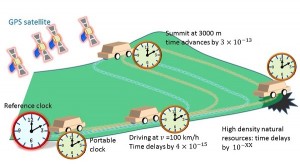
Figure 4: Future applications of the optical lattice clock.
Measuring the different time delays produced by varied driving routes for a motor vehicle carrying an optical lattice clock allows gravitational potential to be mapped. Anomalies in gravitational potential might indicate the presence of natural resources or other features lying hidden beneath the surface.
© 2015 Hidetoshi Katori.
In his current experiment, clocks with 18-digit accuracy at each of Katori’s laboratories at the University of Tokyo and RIKEN have been connected with an optical fiber. The height difference between the two laboratories is about 15 meters. This experiment, which uses optical lattice clocks to show a difference in the passage of time at different gravitational potential energies, seeks to demonstrate a new technique termed relativistic geodesy in which the principles of general relativity are applied to mapping the gravitational potential of the earth.
In actual fact, one of the implications of relativity theory is that it is difficult for us to share the same time at two different locations. While we believe we are measuring time, we are in fact measuring the difference of gravitational potential at the two locations. The remote optical lattice clocks function in fact as a gravitational potential meter or altimeter.
A device that accurately measures gravitational potential may enable us to see the eruption of volcanoes and the arrival of tsunamis. Broad adoption of the accurate timekeeping offered by the optical lattice clock may lead to new applications beyond our imagination (figure 4). Katori continues his research, looking forward to the day when the applications of his research surpass his imagination.
Interview/text: Naoto Horibe. Translation: Tony Atkinson.
Researcher
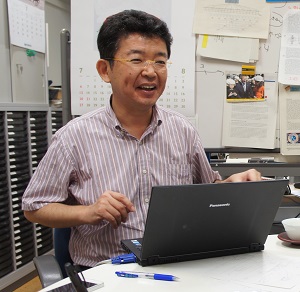
Professor Hidetoshi Katori
Links
Graduate School of Engineering
Department of Applied Physics, Graduate School of Engineering
Katori Laboratory, Department of Applied Physics, Graduate School of Engineering
Paper
Ichiro Ushijima, Masao Takamoto, Manoj Das, Takuya Ohkubo & Hidetoshi Katori, “Cryogenic optical lattice clocks”, Nature Photonics (2015), doi: 10.1038/nphoton.2015.5.
Article link (Publication)




